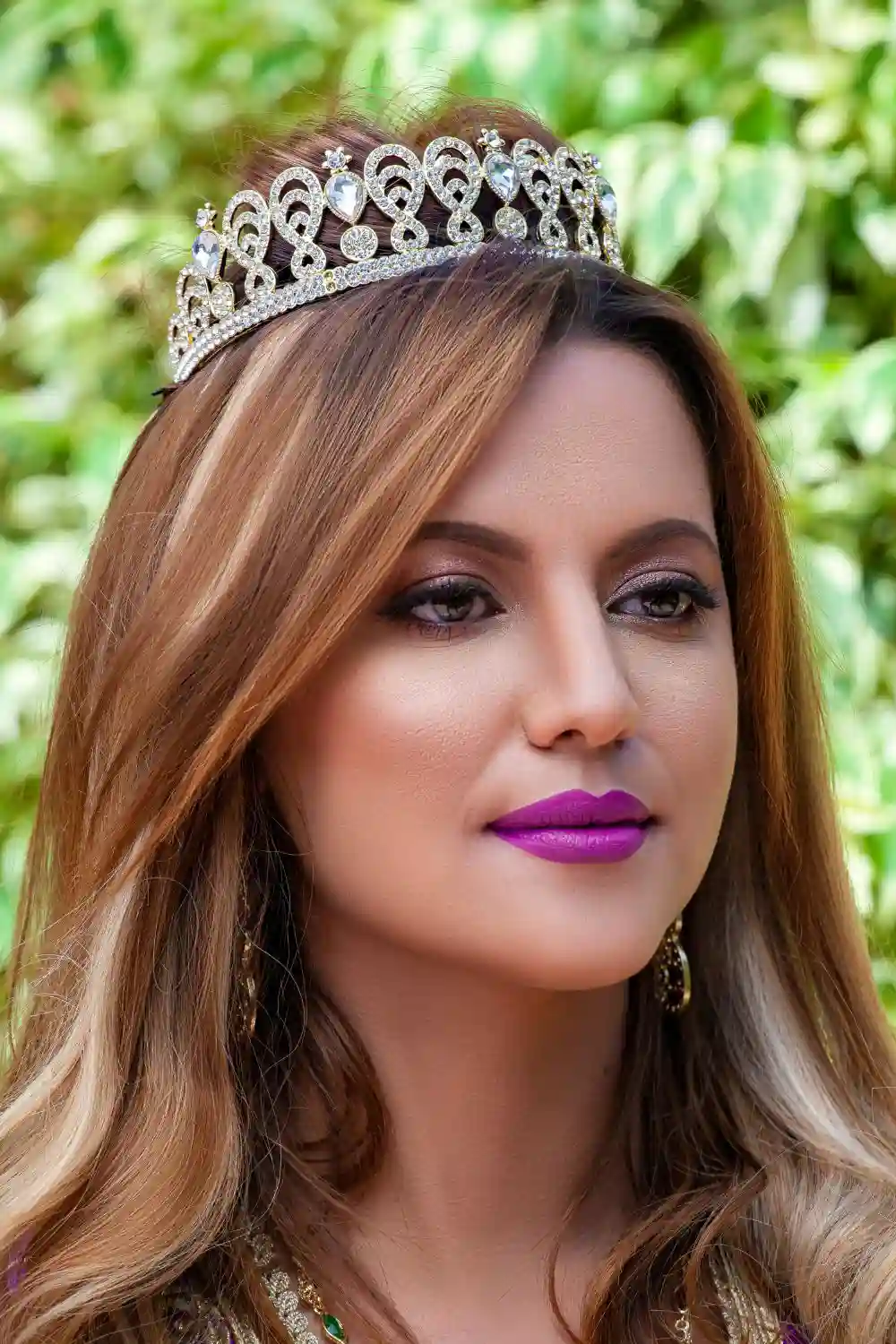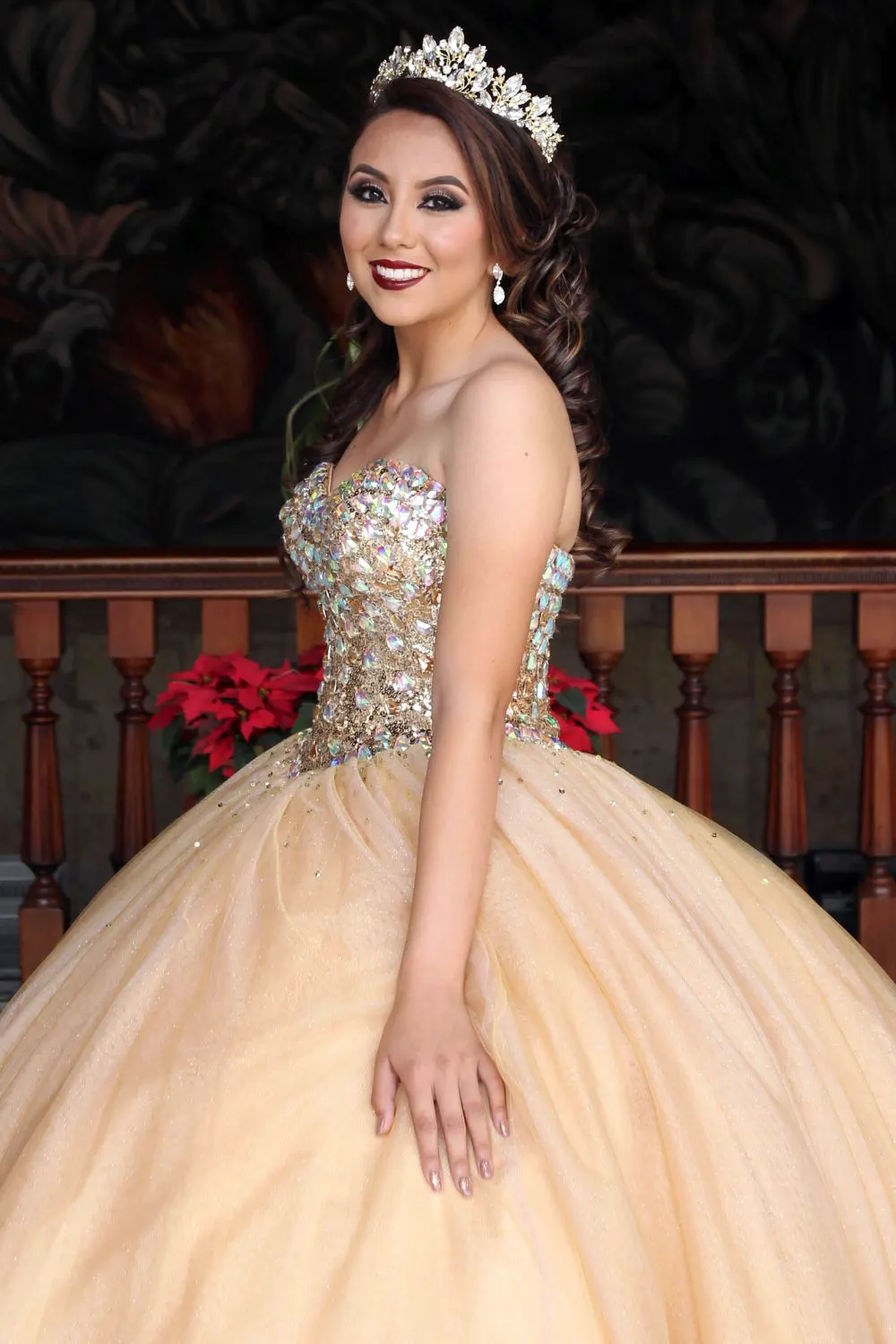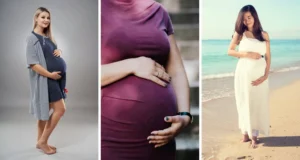Ladies wear tiaras to feel like royalty, make a grand entrance, and grab eyeballs with elegance. Tiaras have long been a status symbol of the noble and wealthy women who wear them on special occasions.
Wearing a tiara makes women feel like real princesses. It marks them as the belle of the ball, especially on a momentous day. Brides wear tiaras on their wedding day, feeling proud and regal like a queen. The tradition goes back centuries when tiaras belonged only to women who’d tied the knot.
Tiaras offer functionality, like keeping hair neatly in place during ceremonies and formal gatherings. But the main draw is the beatific allure. Some ladies inherit tiaras passed through generations, now treasured heirlooms.
Women feel larger than life when decked in a dazzling tiara for white-tie affairs or state occasions. The glimmering crown adds an aura of poise and elegance to outfits. So ladies wear tiaras to feel as important and privileged as the women through ages for whom tiaras were meant.
What are the reasons ladies wear tiaras?
Tradition & Symbol of Status
Tiaras are a symbol of tradition and status. Wearing tiaras traces back to ancient times when royalty wore them as a symbol of power and privilege.
Tiaras allowed queens, princesses, and noblewomen to show their elevated social status. Even today, tiaras carry an aura of tradition and rich history when worn by ladies.
Tiaras signify occasions of grandeur and elegance. Ladies typically wear tiaras at formal events like balls, galas, and weddings where a certain level of sophistication and nobility is called for.
Tiaras add an air of luxuriance and elegance to such events and the outfits worn. They represent the height of style and class.
Some ladies wear tiaras on their wedding day. In many cultures, it is customary for brides to wear a tiara – usually one that has been passed down through the family – at their wedding.
The tiara symbolizes the passing of the bride from her father’s home to her husband’s, marking her transformation into a married woman.
In summary, tiaras have deep-rooted associations with tradition, status, and elegance. When ladies wear tiaras today, they carry on traditions that date back centuries and visually express the legacy of nobility and royal refinement that tiaras represent.

Beauty & Elegance
Tiaras are exquisite pieces of jewelry. Tiaras are crafted meticulously with ornate designs and adorned with dazzling gemstones. The craftsmanship and materials make tiaras magnificent to look at.
The detailed designs consisting of symbols, flowers, and animals, plus gemstones like diamonds, rubies, and emeralds, intensify the beauty of tiaras. The crafting and decorating of tiaras with fine details and gems create magnificent jewelry pieces.
Tiara radiates elegance. The magnificence of tiaras helps ladies wearing them to look graceful and sophisticated. Tiaras give ladies a dignified feeling and an aura of nobility.
Donning a tiara makes a woman feel refined, stylish, and exceptional. The confidence this gives strengthens her poise and bearing.
Ladies wear tiaras on formal occasions. Tiaras are typically selected for events demanding sophistication, like weddings, galas, and balls where formality is needed.
A tiara’s glitter elevates any outfit, complementing the atmosphere perfectly. The splendor of tiaras fits with the grandeur of these remarkable occasions.
In summary, ladies wear tiaras because they are stunning pieces of jewelry crafted finely using designs and gems. Tiaras make ladies feel elegant, stylish, and self-assured when worn. They suit formal celebrations where ladies want to add sophistication and nobility to their attire. The crafting, radiance, and suitability for formal wear make tiaras alluring accessories for ladies.
Functionality
Tiaras keep their hair in place. Tiaras are valuable for ladies with long hair during formal affairs as they help keep hair neatly arranged. The wire beneath and velvet band of tiaras are nestled into updos, buns, or braids, stabilizing coiffures.
Some tiaras have elastic backs that clip into dos. This hair management allows ladies to move around yet maintain a dignified appearance.
Tiaras complement formal attire. Tiaras serve ladies well at important events needing formality, like weddings, balls, and galas. Their sparkle elevates ladies’ ensembles, matching events’ grandeur perfectly.
The splendor of tiaras harmonizes with the events’ solemnity. Tiaras practically finish ladies’ formal outfits and attitudes, complementing both.
Tiaras provide versatility. Many tiaras, especially historical ones, are multipurpose and usable for casual wear beyond official events. This versatility means ladies can employ tiaras in several styles, boosting outfits’ elegance in multiple ways. While tiaras epitomize beauty and rank, their functionality of organizing hair grants practicality. They improve ladies’ looks and help maintain dignified, polished appearances throughout events.
Sentimental Heirlooms
Tiaras are heirlooms with sentimental value. Some ladies wear tiaras handed down from previous generations. These tiaras tie ladies to their history and ancestors.
The treasured family pieces connect wearers to their lineage. Wearing such an heirloom adds an emotional facet to an occasion.
Tiaras were meaningful to predecessors. Cherished tiaras in ladies’ families show how much past female relatives valued the jewelry. That previous generations decreed tiaras worthy of being passed down exhibits the tiaras’ importance.
Tiaras symbolize heritage. Family tiaras represent a lady’s cultural and historical roots. The artistic backdrops and jewelers who created tiaras link ladies to a bygone era. Tiaras embody the tradition and craft handed down to one’s forebearers.
Tiaras commemorate family histories. Heirloom tiaras signify families’ happened sagas and chronicles. Tiaras link ladies to untold stories and significant events across eras.
Tiaras are offered to brides. In many lineages, brides receive tiaras worn by previous brides in their families. This custom shows continuity and ritual, linking subsequent brides through tradition. Heirloom tiaras connect ladies to familial pasts emotionally and historically. Beyond beauty, such tiaras signify heritage, ritual, family narratives, and lineage. Tiaras, given or inherited, elicit deep sentiments when ladies wear them.
Fashion Statement
Ladies wear tiaras today mainly as a fashion statement to make a bold impression. Tiaras have transformed from ceremonial headpieces to trendy accessories desired by fashion-forward women.
Historically, tiaras were worn by royalty and nobility to signify their high status. Over time, celebrities and fashion icons began wearing tiaras as part of their glamorous look, particularly on red carpets and special occasions.
This widespread usage by trendsetters elevated tiaras into a mainstream fashion accessory.
Modern tiaras come in diverse designs suited for different styles and outfits. Their stylish and non-traditional forms distance them from their conservative origins, appealing to women seeking to make a unique fashion statement.
The regal and majestic appearance conferred by a tiara allows ladies to feel elegant and confident, adding to a tiara’s desirability.
In summary, tiaras have become fashionable for ladies wanting to stand out and make an impression. Celebrities have contributed to the revival of tiaras by embracing tiaras as coveted additions to a modern woman’s wardrobe. Today, tiaras offer women a simple yet powerful way to exude charm and sophistication through their fashion.

Formal Occasions
Traditionally, ladies have worn tiaras on special formal occasions to add grandeur and elegance. Royal brides most notably wear tiaras on their wedding days to signify their elevated status.
Historically, tiaras represented nobility, and the etiquette around wearing them was strict. Only married women from aristocratic families could don tiaras at formal daytime events after mid-afternoon. But slowly, things began to change.
In recent decades, common women have started wearing tiaras for fashion more than formality. Celebrities flaunting tiaras on red carpets have made them mainstream.
Modern tiaras with innovative designs have distanced themselves from their conservative origins, appealing to a wider audience.
Yet, tiaras still retain their regal appeal for special occasions. Brides dreaming of lifelong love often see tiaras as a symbol of happiness and good fortune. For formal evening gatherings like aristocratic balls and state dinners, tiaras remain a marker of grandeur and elegance by their simple presence.
Ladies usually wear tiaras at formal events to add an air of nobility, refinement, and higher purpose. While commoners now don tiaras as mere fashion statements, their original associations of aristocracy, wealth, and status make them an ideal complement for white-tie evenings and weddings that seek to create an aura of grandeur, timelessness, and joy.
Part of Parure
Tiaras are often part of matching parure sets consisting of necklaces, earrings, bracelets, and brooches. Together, these create a cohesive, sophisticated look that enhances the wearer’s allure.
A parure refers to a collection of matching jewelry pieces designed to be worn together. The word comes from the French verb ‘parer’, meaning ‘to adorn’. Traditionally, parures were worn by royals and nobility as a display of wealth and status.
The key element of a parure is harmony. When carefully designed, the pieces complement each other to create an elegant whole greater than the sum of its parts. The jewelry’s colors, shapes, and materials work in tandem to produce a timeless aesthetic.
Tiaras are particularly suited to parures because of their modularity. Rather than being static pieces, tiaras can be disassembled and reconfigured using interchangeable components and locking systems. This allows them to remain fashionable and suit various occasions.
In essence, tiaras function as versatile centerpieces of parures, complementing matching pieces of jewelry that create cohesive and sophisticated ensembles. A parure’s lavish and carefully orchestrated effect enhances the wearer’s magnificence and allure through its complete design harmony for formal gatherings or ceremonial events.
Loaned Officially
To signify importance and status. Tiaras are worn to signify the wearer’s importance and high status in society. Ladies who are loaned tiaras by the Queen or other authorities are shown to hold a position of significance, especially at state events and official ceremonies.
As a symbol of reality. Wearing a tiara gives ladies a feeling of regality and magnificence, transporting them into a royal and elegant world. Even if the tiara is only worn for a brief event, it helps the wearer feel like a queen for a day.
To mark special occasions. Tiaras are often worn for very special occasions like weddings and coronations that call for utmost formality and pageantry. The tiara adds an aura of tradition, celebration, and timelessness to these memorable life events.
As family heirlooms. Some tiaras have been passed down through generations of royalty and aristocracy as precious heirlooms. When a lady is loaned the family tiara, it connects her to the history and legacy of the jewelry piece and the family.
In short, ladies wear tiaras to signify their importance, add regal flair to special events, and connect them to tradition, legacy, and family history. The feeling of status, magnificence, and being treated like royalty, even for a day, ultimately draws ladies to wear these exquisite headpieces.
Historical Roots
Throughout history, tiaras have symbolized power, prestige, and nobility. Originally worn by ancient kings and queens, they evolved into jewelry for women of high social rank and status. Even today, tiaras retain their royal and regal connotations.
When a lady wears a tiara, she taps into this historical legacy. She becomes part of a tradition that dates back thousands of years, connecting her to the world of royalty and aristocracy.
The tiara symbolizes wealth, authority, and a privileged position in society – elements that have shaped Western culture for centuries.
By donning a tiara, a lady evokes images of queens, empresses, and women who wore these ornate headpieces. She channels the glamour, extravagance, and mystique associated with tiaras and the women who had the status to wear them.
The tiara serves as a silent reminder of the power and influence wielded by past female rulers and nobility.
For many ladies, tiaras hold the allure of transforming them, even if just for a moment, into historical figures of grandeur and majesty. The tiara offers a glimpse of what it was like to be part of a privileged class that shaped politics and culture. It represents a bygone era of opulence and elegance that still fascinates many today.
In short, when ladies wear tiaras, they connect with the historical significance of these headpieces as symbols of power, wealth, status, and aristocratic lifestyle. The tiara bridges these women to the world of queens, impresses, and aristocrats throughout the ages.
Loss of Innocence
For centuries, tiaras were reserved exclusively for brides on their wedding day according to ancient tradition. By wearing a tiara at her wedding, the bride indicated that she was losing her innocence and entering into married life. The tiara symbolized the transition from virgin to wife, from innocence to experience.
The tiara served as a “crowning glory” for brides, acknowledging their transition into womanhood through marriage. It represented the blossoming of love and the end of a maiden’s life.
Wearing a tiara on her wedding day was a rite of passage for a bride, a public acknowledgment of her transformation from girl to wife.
While this tradition has evolved over the years, allowing married women to wear tiaras beyond their wedding day, the original symbolism of transition and transformation remains. Even today, a woman’s first tiara is often worn on her wedding day.
And married women who wear tiaras on special occasions still embrace the tiara’s inherent symbolism of experience, wisdom, and maturity that comes with losing innocence.
In short, when ladies wear tiaras today – whether on their wedding day or other special occasions – they align themselves with the tiara’s long history as a symbol of womanhood. They are partaking in an age-old ritual of acknowledging a woman’s symbolic loss of innocence and entering a more experienced, sophisticated phase of life. The tiara continues to represent a symbolic rite of passage for women, signifying their transition from one stage of life to another.
Blending with Hair
Tiaras complement a woman’s looks, not subtly overshadow them. To achieve this balance, tiara designers consider how the piece will integrate with the wearer’s hairstyle.
Many tiaras feature bands wrapped in velvet that match the woman’s hair color. This ensures the tiara will blend inconspicuously into her updo or style. The matching color acts as a chameleon, allowing the tiara to disappear into the hair.
Some tiaras also include elastic sections in the band for added flexibility. The elastic allows the tiara to accommodate different head sizes and hair textures. It helps the tiara maintain a comfortable but secure fit as a woman switches between hairstyles.
The combination of a matching-color velvet band and elastic sections gives tiaras versatility. They can seamlessly integrate with updos, half-up styles, curls, or waves. No matter the wearer’s specific look, the tiara adapts to become an understated yet shining accent.
A well-designed tiara should blend into the wearer’s hair, framing – not distracting from – her face and features. Careful considerations like velvet wrapping and elastic ensure the tiara achieves this balance. The end result is a tiara that enhances a woman’s natural beauty instead of overpowering it.
In short, ladies seek out tiaras designed to blend inconspicuously with their hair. Matching-color velvet bands and elastic sections seamlessly integrate the tiara into any hairstyle. The tiara subtly accentuates a woman’s looks instead of dominating them, creating a harmonious whole that flatters and accentuates her natural beauty.
Changing Norms
For centuries, strict rules governing who could wear a tiara and when. Tiaras were traditionally reserved for brides and married women of high social status. Single women wearing tiaras were practically unheard of.
However, in the 21st century, the rigid norms around tiara wear have become more relaxed. Any woman can wear a tiara to white-tie events regardless of her marital status. This reflects a broader shift towards greater freedom and accessibility for tiaras.
A few factors have contributed to changing tiara norms. Mass production has made tiaras more affordable, so they are no longer exclusively for the wealthy. Tiaras have also become more mainstream through popular culture, making them desirable fashion accessories for all women.
As a result, tiaras are now seen as versatile accessories that can frame many looks and occasions. They evoke feelings of luxury, fantasy, and romance for modern women in a way that transcends traditional restrictions.
While certain protocols still govern proper tiara wear, the trend is towards more inclusivity. Single women, married women, and women of varying social statuses can now freely don a tiara when the occasion calls for ultimate elegance.
In short, changing social norms now allow ladies from all walks of life to wear tiaras with greater freedom. The strict rules that once governed tiara wear are relaxing as tiaras become more trendy, affordable, and versatile fashion accessories for the modern woman. Tiaras are embracing a new meaning beyond symbols of privilege, status, and tradition – they’re simply elegant accessories that make women feel special.

Summary
Ladies wear tiaras to glamorize outfits for formal occasions and feel elegant. Tiaras come from ancient traditions as crowns of royalty and privilege. Their ornate craftsmanship and gemstones make tiaras pieces of beautiful jewelry.
Tiaras help maintain formal hairstyles. Velvet bands match hair color to blend in. Some have elastic bands to adjust fit. They are often part of parure sets with earrings, necklaces, and brooches to attain complete harmony. They can be disassembled to adapt to different looks.
Ladies feel royal wearing tiaras loaned by the Queen for important events. Historically, tiaras were reserved for married ladies of high status. Now any lady can wear one as a fashion accessory. Affordability and popularity made tiaras accessible to all women.
Ladies wear tiaras for formal flair, beautiful designs, sentimental value, nobility, status, fashion, and hair management. Modern notions around tiara wear are becoming less restrictive.
FAQ
Why do ladies wear tiaras at coronation?
Ladies wear tiaras at coronations as a symbol of social superiority and power, following the ancient tradition that reserves tiaras for brides on their wedding day. The tiaras signify elegance, refinement, and authority, adding grandeur to formal events like coronations. There is also a historical precedent for women in the royal family to wear bejeweled toppers on such occasions.
Who has the right to wear a tiara?
Any woman can wear a tiara at events with a “white tie” dress code regardless of title or royalty. Traditionally, young unmarried women refrained from wearing tiaras, but this custom has evolved. Tiaras are often linked to brides on their wedding day or married women, symbolizing the transition from innocence to love. On special occasions, tiaras can be loaned officially, with the Queen either selecting the tiara or offering a small selection for the wearer to choose from, though input on style and size is uncertain.
What is the no tiara rule?
The “no tiara” rule primarily applies to unmarried girls and royal ladies under 18. Traditionally, tiaras are associated with brides on their wedding day or married women, symbolizing the transition from innocence to love. Tiaras are typically lifetime loans, becoming exclusive to the wearer for their entire life. The Queen may choose or offer a selection of tiaras for special occasions like weddings, though the wearer’s input on style and size is uncertain.
Is there a difference between a crown and a tiara?
Yes, there are significant differences between a crown and a tiara. According to tradition, only the Queen can wear a crown, while tiaras are worn by brides, married women, or at “white-tie” events. Crowns cover the whole head in a full circle, representing absolute power and monarchy in royal and state ceremonies, whereas tiaras are a semi-circle and cover only half the head, embodying femininity and grace, suitable for formal events. Crowns are generally larger and taller than tiaras. Additionally, both crowns and tiaras can hold cryptic meanings in the British Royal Family’s context. A diadem is a type of crown or headband used in ancient times to signify the legitimacy of a ruler’s reign.
Did Princess Diana have a tiara?
Yes, Princess Diana had several tiaras and was often seen wearing them on formal occasions. Some of the tiaras she was associated with include the Cambridge Lover’s Knot Tiara and the Spencer Tiara, which was an heirloom from her family. Additionally, her wedding tiara, a Spencer family piece, is considered an iconic piece of royal jewelry.



